Thai Scarlet Isopod For Sale
$24.99 – $199.99
WE HAVE THAI SCARLET ISOPOD FOR SALE HERE ARE SOME HIGHLIGHTS:
- Philoscia sp. “Thai”
- Captive Bred
- Mixed Sizes: Nymphs To Adults .25 mm
- Adults Grow To About
- Excellent For Cleaners And Feeders
FUN FACTS!
- Fast Reproducing, Soft Bodied Invert
- These Will Reproduce Right Inside Your Set-Up Supplying A Sustainable Cleanup Crew For Your Animals
- Add These To Your Terrarium To Create A “Bio-Active” Set-Up
- Isopods Consume Waste And Decaying Matter To Keep Your Tank Clean
- Requiring Moderate To High Humidity With Temperatures Of 70 – 85 Degrees
- Smaller Species Of Isopod Great Food Source For Smaller Sized Frogs And Lizards
Thai Scarlet Isopod
The Thai Scarlet Isopod, scientifically known as Cubaris sp. ‘Red Tiger’, represents a remarkable addition to the diverse world of isopods. Discovered in the lush environments of Thailand, this unique isopod has garnered significant attention due to its striking appearance and intriguing characteristics. Its vibrant red coloration, coupled with distinct tiger-like stripes, makes it a standout species within the isopod community. These physical attributes not only contribute to its visual appeal but also play a role in its survival within its natural habitat.
Measuring approximately 1.5 cm in length, the Thai Scarlet Isopod boasts a robust exoskeleton that provides protection against predators and environmental stresses. This feature, along with its ability to roll into a tight ball when threatened, highlights its adaptive strategies. The isopod’s segmented body, antennae, and multiple legs are typical of the species, yet its coloration sets it apart, making it a subject of fascination for researchers and hobbyists alike.
In recent years, the Thai Scarlet Isopod has gained popularity within the pet trade and among isopod enthusiasts. Its exotic appearance and relatively easy care requirements have made it a sought-after addition to terrariums and vivariums. Collectors are drawn to its unique aesthetic and the opportunity to observe its behaviors up close. Furthermore, its presence in the pet trade has spurred a growing interest in the conservation of its natural habitats, promoting awareness and appreciation for the biodiversity of the regions it inhabits.
The allure of the Thai Scarlet Isopod lies not only in its distinctive look but also in the broader story it tells about adaptation, survival, and the ongoing efforts to understand and protect the planet’s lesser-known creatures. As interest in this species continues to grow, so too does the recognition of its importance within the ecological tapestry of its native environment.
Habitat and Natural Environment
The Thai Scarlet Isopod, a captivating crustacean species, thrives in the diverse and lush environments of Thailand. Predominantly found in tropical and subtropical regions, these isopods have adapted to a variety of ecosystems that provide the ideal conditions for their survival and reproduction. The warm and humid climate of Thailand, characterized by consistent rainfall and high temperatures, creates a hospitable environment that supports an abundance of life, including the Thai Scarlet Isopod.
In their natural habitat, these isopods are often located in areas with dense vegetation, which offers ample shelter and food resources. They are commonly found under decaying leaves, logs, and other organic matter on the forest floor. This leaf litter not only provides a rich source of nutrition through decomposing plant material but also ensures a moist microhabitat, crucial for the isopod’s respiratory function as they breathe through gill-like structures. The presence of fungi and other microorganisms in these environments further contributes to the nutrient-rich habitat that is essential for their growth and development.
The Thai Scarlet Isopod’s behavior is greatly influenced by the environmental conditions of its habitat. The high humidity levels are vital for preventing desiccation, while the temperature regulates their metabolic rates. These isopods are primarily nocturnal, engaging in most of their activities during the cooler, darker hours to conserve moisture and avoid predators. The dense vegetation not only provides physical cover but also creates a complex ecosystem where the isopods can interact with other species, contributing to the overall biodiversity of the region.
The natural environment of the Thai Scarlet Isopod is a testament to the intricate balance of climatic and ecological factors that sustain their populations. Understanding these habitats is crucial for conservation efforts, ensuring that these unique creatures continue to thrive in their native regions amidst growing environmental challenges.
Physical Characteristics and Appearance
The Thai Scarlet Isopod, a captivating species known for its vivid coloration, boasts striking physical characteristics that distinguish it from other isopods. The most noticeable feature of the Thai Scarlet Isopod is its vibrant red and black coloration. This striking color combination not only makes it visually appealing but also plays a crucial role in its survival. The red and black hues create a unique pattern that can vary slightly between individuals, adding to their allure.
The body of the Thai Scarlet Isopod is segmented and somewhat flattened, which aids in its movement and ability to hide in narrow crevices. Typically, these isopods measure between 1 to 2 centimeters in length, making them relatively small yet easily noticeable due to their vivid colors. The exoskeleton is sturdy, providing protection against predators and environmental hazards. Each segment of the exoskeleton is adorned with tiny, intricate patterns that further enhance their distinctive appearance.
Moreover, the Thai Scarlet Isopod’s coloration serves as a form of camouflage in its natural habitat. The red and black patterns help it blend into the reddish soil and dark crevices of its environment, making it less visible to predators. This form of natural camouflage is a critical survival mechanism, allowing the isopod to remain undetected in the wild. Additionally, during mating season, the vibrant colors play a significant role in attracting mates, with more brightly colored individuals often having a higher chance of reproductive success.
In terms of body structure, the Thai Scarlet Isopod possesses antennae that are highly sensitive to environmental changes, aiding in navigation and the detection of food sources. Its legs are adapted for efficient movement across various surfaces, including the rough terrain of its native habitat. These combined physical traits not only contribute to the isopod’s survival but also make it a fascinating subject for researchers and enthusiasts alike.
Behavior and Lifestyle
The Thai Scarlet Isopod exhibits a unique and intricate behavior that contributes to its intriguing lifestyle. A significant aspect of their existence revolves around their social structure. These isopods often form small, cohesive groups, enhancing their survival through collective behaviors such as foraging and defense against predators. The social bonds within these groups are maintained through constant, yet subtle, interactions, signifying a complex communication system.
Daily activities of the Thai Scarlet Isopod are governed by their circadian rhythm. They are primarily nocturnal, emerging from their shelters during the night to forage for food. Their diet is predominantly composed of detritus, algae, and decaying organic matter. This feeding habit not only sustains their nutritional needs but also plays a crucial role in the decomposition process within their ecosystem, thereby maintaining environmental balance.
Reproductive behavior in the Thai Scarlet Isopod is a fascinating aspect of their lifestyle. Reproduction occurs through a process known as copulation, where the male transfers spermatophores to the female. Post-mating, the female carries the fertilized eggs in a specialized brood pouch until they hatch. This parental investment ensures a higher survival rate for the offspring, which are then released into the environment as fully developed juveniles.
Interaction with their environment is paramount for the survival of the Thai Scarlet Isopod. They exhibit a remarkable ability to adapt to various environmental conditions, whether it be fluctuating temperatures or changes in humidity. Additionally, these isopods engage in symbiotic relationships with other species, such as providing cleaning services to fish by removing parasites and dead skin, thereby benefiting both parties.
In essence, the behavior and lifestyle of the Thai Scarlet Isopod are characterized by their social interactions, nocturnal activities, specific dietary habits, and reproductive strategies. These aspects not only define their existence but also underscore their integral role in the ecosystem they inhabit.
Care and Maintenance in Captivity
For enthusiasts looking to keep Thai Scarlet Isopods as pets, providing an optimal environment is crucial for their health and well-being. Setting up a suitable habitat begins with selecting the right enclosure. A plastic or glass terrarium with a secure lid is recommended, ensuring it is spacious enough to allow for natural behavior and movement. A layer of substrate, such as coconut fiber or sphagnum moss, should be maintained at a depth of at least two inches to facilitate burrowing and moisture retention.
Maintaining the proper humidity level is vital for Thai Scarlet Isopods. Aim for a relative humidity of 70-80%, which can be achieved by misting the enclosure regularly and incorporating moisture-retentive elements like leaf litter and bark. Temperature is another critical factor; these isopods thrive in a range of 70-80°F (21-27°C). It is advisable to use a thermometer and hygrometer to monitor these conditions consistently.
When it comes to diet, Thai Scarlet Isopods are detritivores, meaning they primarily feed on decomposing organic matter. Providing a variety of leaf litter, decayed wood, and vegetable scraps will meet their nutritional needs. Supplementing their diet with calcium-rich sources, such as cuttlebone or eggshells, can promote healthy exoskeleton development.
Regular maintenance of the enclosure is necessary to prevent the buildup of waste and mold. Spot cleaning, along with periodic substrate replacement, will help maintain a clean and healthy environment. Monitoring for common health issues, such as fungal infections or mite infestations, is also important. Addressing these problems promptly can prevent them from spreading and causing significant harm to the isopods.
Breeding Thai Scarlet Isopods in captivity is relatively straightforward. Ensuring a stable environment with ample food and hiding spaces will encourage natural reproduction. Females carry their eggs in a brood pouch, and upon hatching, the juveniles closely resemble miniature adults. Providing an abundance of decaying organic material will support the growth and development of both adults and juveniles, ensuring a thriving colony.
Role in the Ecosystem
The Thai Scarlet Isopod plays a crucial role in maintaining the balance of its ecosystem. One of their primary contributions is in the decomposition process. These isopods are detritivores, meaning they feed on dead organic matter. By breaking down decaying plant and animal material, they facilitate nutrient recycling and promote soil health. This decomposition process is essential for the ecosystem, as it returns vital nutrients to the soil, which are then available for plants and other organisms.
Additionally, the Thai Scarlet Isopod contributes to soil aeration. As they move through the soil, they create small tunnels and burrows, which improve soil structure and increase aeration. This enhanced soil aeration promotes root growth and helps maintain a healthy environment for plants. The increased soil porosity also aids in water infiltration and reduces the risk of soil compaction, further supporting plant health.
The Thai Scarlet Isopod also serves as a food source for various predators, including birds, small mammals, and other invertebrates. This positions them as an integral part of the food web, supporting higher trophic levels within their ecosystem. The presence of these isopods can directly influence the population dynamics of their predators, contributing to the overall biodiversity of the ecosystem.
Moreover, their interactions with plants are notable. While primarily feeding on detritus, they may also consume decaying plant material, helping to keep the environment clean and free of excessive plant litter. This interaction can indirectly benefit plant growth by maintaining a balanced ecosystem where nutrient cycling is efficient and continuous.
Overall, the Thai Scarlet Isopod’s role in decomposition, soil aeration, and as a food source underscores their ecological importance. Their interactions with plants and other organisms highlight their multifaceted contributions, making them indispensable to the health and sustainability of their natural habitats.
Conservation Status and Threats
The Thai Scarlet Isopod, a unique crustacean indigenous to Thailand, is currently facing numerous threats that jeopardize its survival. According to recent studies, the conservation status of this species is increasingly concerning, primarily due to habitat destruction. Rapid urbanization and agricultural expansion have led to the significant degradation of natural habitats, leaving these isopods with limited areas to thrive.
Climate change further exacerbates the precarious situation of the Thai Scarlet Isopod. Alterations in temperature and precipitation patterns disrupt their delicate ecosystems, affecting their reproductive cycles and availability of food sources. Rising temperatures can also lead to increased susceptibility to diseases, further reducing their population in the wild.
Moreover, the over-collection of Thai Scarlet Isopods for the pet trade presents a significant threat. These isopods are often sought after for their striking coloration and unique appearance, driving a demand that leads to unsustainable harvesting practices. This not only depletes their numbers but also disrupts local ecosystems where they play a crucial role in nutrient cycling and soil health.
Efforts to mitigate these threats and protect the Thai Scarlet Isopod are underway, although more comprehensive measures are needed. Conservation initiatives include habitat restoration projects aimed at rehabilitating degraded areas, ensuring that these isopods have a viable environment to return to. In addition, some organizations are working to regulate the pet trade by implementing stricter collection guidelines and promoting captive breeding programs to reduce pressure on wild populations.
Furthermore, raising awareness about the plight of the Thai Scarlet Isopod is essential. Educating the public and policymakers about the importance of preserving their habitats and enforcing conservation laws can foster a collective effort to safeguard these unique creatures. Through a combination of habitat protection, sustainable practices, and increased awareness, there is hope for the future of the Thai Scarlet Isopod.
Conclusion and Final Thoughts
Throughout our exploration of the Thai Scarlet Isopod, we have delved into the captivating characteristics that make this species a remarkable subject of study. From their vibrant coloration to their unique behavioral patterns, Thai Scarlet Isopods serve as fascinating examples of biodiversity. Their importance extends beyond mere aesthetics, as they play a significant role in their natural habitats, contributing to the ecosystem’s balance and health.
In captivity, Thai Scarlet Isopods offer an intriguing glimpse into the complexities of arthropod care. Their relatively simple requirements make them accessible to enthusiasts while providing an opportunity to observe their behaviors up close. However, it is crucial to emphasize the importance of responsible pet ownership. Ensuring that these isopods are sourced ethically and that their living conditions mimic their natural environment as closely as possible are essential steps in their care.
The conservation of Thai Scarlet Isopods also merits attention. As with many unique species, habitat destruction and environmental changes pose significant threats. Supporting conservation efforts can help protect these isopods and other species that share their habitat. By contributing to initiatives aimed at preserving their natural environments, we can aid in maintaining the biodiversity that is so vital to our planet’s health.
In essence, the Thai Scarlet Isopod is more than just a visually appealing creature; it is a testament to the intricate web of life that sustains our world. By appreciating their role in the ecosystem and advocating for their conservation, we can ensure that these remarkable isopods continue to thrive both in the wild and in the homes of responsible pet owners. Let us all take a moment to reflect on the importance of these creatures and the broader implications of our actions in preserving the natural world.
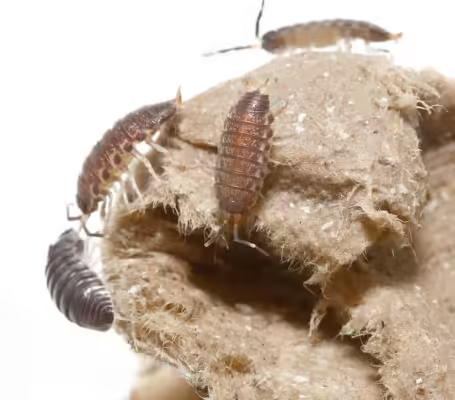
| Option | Single, 5 ct, 10 ct |
|---|
Be the first to review “Thai Scarlet Isopod For Sale” Cancel reply
Related products
Isopods
Isopods
Isopods
Isopods

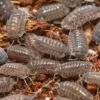


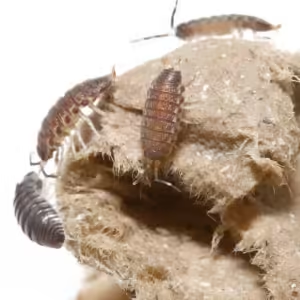


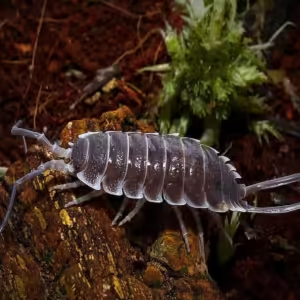



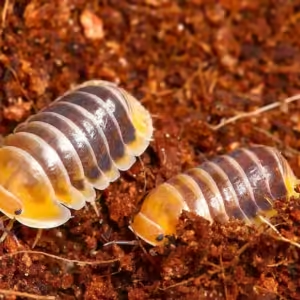

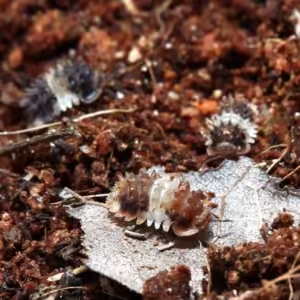

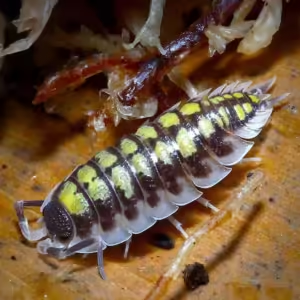
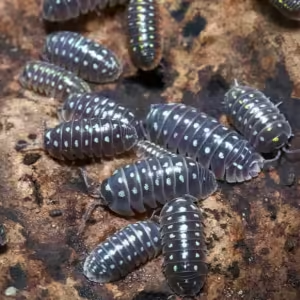
Reviews
There are no reviews yet.